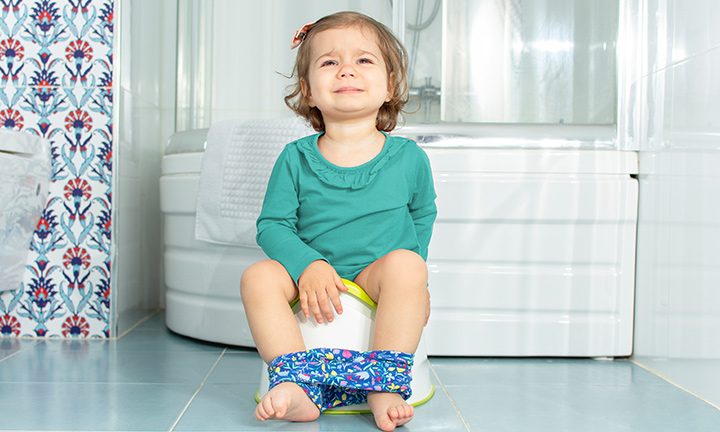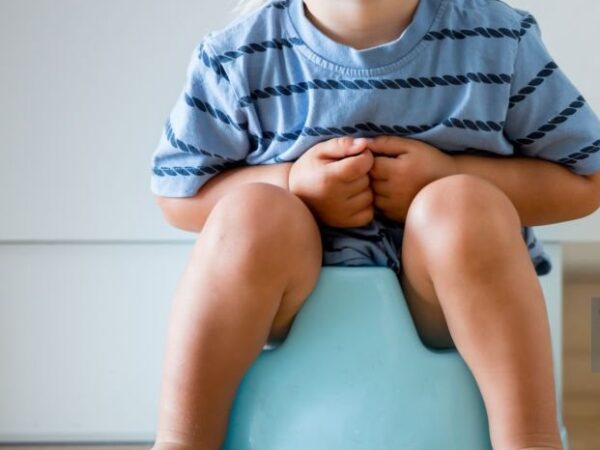
Embarking on the journey of potty training is an adventure like no other. Potty training can be a significant milestone for both parents and children. While it can be challenging at times, having a strategy and understanding the signs of readiness can make the process smoother.
Whether you’re a seasoned parent gearing up for round two or a first-timer braving uncharted territory, embarking on the journey of potty training is a real adventure.
From the triumphant highs of successful bathroom visits to the inevitable lows of unexpected accidents, this pivotal stage of childhood development is filled with laughter, tears, and everything in between.
So, buckle up, parents, and get ready for a wild ride as we explore the ins and outs of potty training together!
Physical Readiness for Potty Training
Physical readiness for potty training is a significant milestone in a child’s development, marked by several key indicators. Firstly, the ability to stay dry for extended periods, typically a few hours at a time, demonstrates their bladder capacity and control.
Additionally, their growing awareness of bodily functions becomes evident as they start to signal when they need to relieve themselves or acknowledge when they have already done so.
Equally important is the motor skill of being able to pull down their pants and subsequently pull them back up, a task that requires coordination and dexterity. Together, these physical capabilities lay the foundation for a smoother transition into the world of potty training, marking a pivotal moment in a child’s journey toward greater independence and self-care.
Behavioral Readiness for Potty Training

How to Potty Train. “The Gentle Way”
Click Here

When gauging your child’s behavioral readiness for potty training, several cues can signal their preparedness. You might notice your child showing curiosity about the potty or mimicking family members using it, indicating a budding interest in the process.
Additionally, they might exhibit signs of discomfort with diapers, perhaps expressing a desire to be changed promptly after soiling them. This discomfort could suggest an emerging awareness of bodily sensations and a preference for cleanliness.
Moreover, their ability to comprehend basic instructions and grasp fundamental concepts such as wet and dry further underscores their readiness for the potty training journey. As these behavioral indicators align, it becomes increasingly evident that your child is approaching a milestone ripe for exploration and guidance.
Strategies for Success for potty training
1- Create a Positive Environment
Creating a positive environment for potty training is crucial for the successful transition from diapers to using the toilet. Establishing a supportive atmosphere involves several key elements. First and foremost, patience and understanding are essential. Children need encouragement and reassurance as they navigate this new skill.
Celebrating small victories and maintaining a positive attitude, even in the face of setbacks, helps foster confidence and motivation. Providing a comfortable and inviting space for potty training, equipped with child-friendly toilet accessories and engaging materials, can also make the process more enjoyable.
2- Establish a Consistent Routine for potty training.
Establishing a consistent routine for potty training is essential for success. Consistency provides structure and predictability, which are crucial for young children learning this new skill. Begin by setting regular times for bathroom breaks, such as after meals or before bedtime, to help your child anticipate when they need to use the potty.
Encourage them to sit on the potty for a few minutes during these designated times, even if they don’t need to go. Praise and positive reinforcement for every attempt, whether successful or not, help reinforce the desired behavior.
Consistency also extends to using the same language and gestures consistently to communicate about potty time. By maintaining a steady routine, you create a supportive environment that empowers your child to master this important milestone with confidence.
3- Provide the Right Tools and Environment for potty training
Providing the right tools and environment for potty training is essential for a smooth and successful transition from diapers to using the toilet. Creating a supportive atmosphere involves offering a child-sized potty chair or a toilet seat insert to make it comfortable and accessible for the child.
Additionally, ensuring a consistent and encouraging environment where the child feels safe and supported is crucial. Introducing tools such as training pants or underwear can also aid in the learning process, allowing children to feel the difference between wet and dry.
Positive reinforcement, patience, and understanding are key components in fostering a conducive environment for potty training, enabling children to develop confidence and independence as they master this important milestone.
4- Celebrate Milestones and Progress
Celebrating milestones and progress in potty training is a pivotal aspect of a child’s development and a rewarding journey for both parents and toddlers alike. Each successful trip to the potty marks a significant achievement, representing growth, learning, and newfound independence.
Whether it’s the first time they use the toilet independently or consistently remember to signal when they need to go, every step forward deserves acknowledgment and praise. Celebrations can take various forms, from a high-five or a special sticker on a chart to a small treat or a fun outing.
These gestures not only reinforce positive behavior but also instill confidence and motivation in children to continue mastering this important skill. Moreover, celebrating milestones fosters a supportive and encouraging environment, making the potty training process a positive experience filled with joy and accomplishment.
Troubleshooting Common Challenges
Resistance
Resistance in potty training can be a common hurdle for parents and children alike. When faced with a child’s resistance, it’s crucial to approach the situation with patience and understanding.
Rather than pushing forward in the face of reluctance, it’s often more effective to take a step back and reassess the timing and approach.
Pressuring a child during potty training can exacerbate their resistance and create negative associations with the process.
By allowing time for both the child and the parent to regroup and try again later, the potty training journey can become a more positive and successful experience for everyone involved.
Regression in potty training
Regression in potty training is a common hurdle that parents encounter, particularly during periods of stress or transition for the child. Whether it’s starting daycare, welcoming a new sibling, or adjusting to a new environment, children may revert to previous behaviors, including accidents or resistance to using the potty.
During these times, providing reassurance and maintaining consistency in the potty training routine are paramount. Reassure your child that it’s okay and normal to have setbacks, emphasizing encouragement and patience.
By sticking to the established routine and offering support, parents can help their child navigate through regression phases with understanding and ease, ultimately fostering a positive and successful potty training experience.
Constipation or Fear in potty training
During the delicate process of potty training, it’s not uncommon for children to encounter hurdles like constipation or fear. If your little one is struggling with physical discomfort or anxiety, it’s crucial to address these issues with care and patience.
Consulting a pediatrician can provide valuable insights into any underlying concerns and offer tailored solutions. Meanwhile, at home, you can play a proactive role by incorporating fiber-rich foods and ensuring your child stays hydrated with plenty of fluids.
By nurturing a supportive environment and taking proactive steps to alleviate discomfort, you can help your child navigate through this developmental milestone with confidence and ease.
Nighttime Training for potty training
Nighttime training for potty training presents its own unique challenges, often taking longer to achieve dryness compared to daytime success. Each child’s journey towards nighttime dryness varies, requiring patience and understanding.
To ease the process, it’s advisable to utilize waterproof mattress covers, providing protection against accidents and minimizing disruptions to sleep routines. Additionally, it’s beneficial to regulate fluid intake before bedtime, reducing the likelihood of nighttime accidents.
By implementing these strategies, parents can support their child’s nighttime potty training efforts while promoting a comfortable and conducive sleep environment.
Conclusion
In conclusion, potty training is a significant milestone in a child’s development that requires patience, consistency, and understanding from both parents and caregivers. While it can be challenging and frustrating at times, it’s important to remember that every child is unique and will progress at their own pace.
Celebrating small victories and maintaining a positive attitude throughout the process can make a world of difference in encouraging your child and keeping them motivated.
Remember, accidents are a natural part of the learning process, and it’s essential to remain calm and supportive when they occur. By creating a supportive environment and offering praise and encouragement, you can help build your child’s confidence and independence.
With time, patience, and a little bit of humor, you’ll navigate through the ups and downs of potty training and emerge with a proud and confident toddler ready to take on the next stage of their development. Remember that what works for one may not work for another. Stay patient, stay consistent, and celebrate each step forward in your child’s potty training journey.

